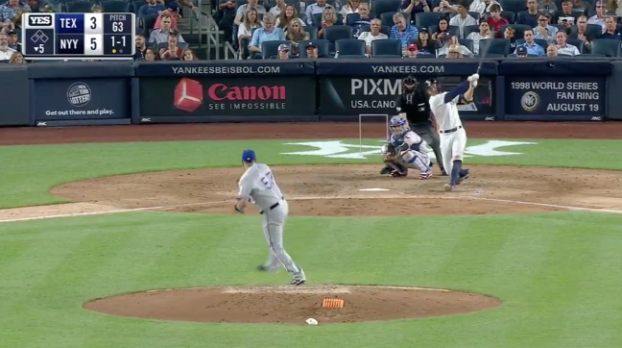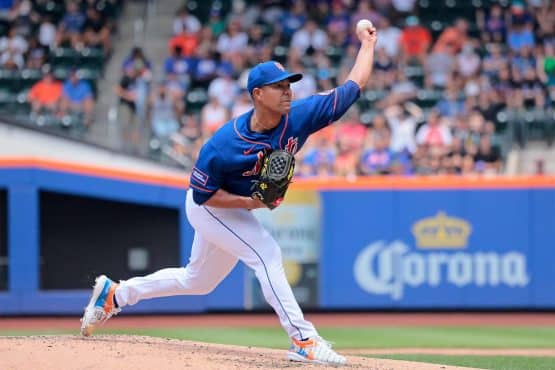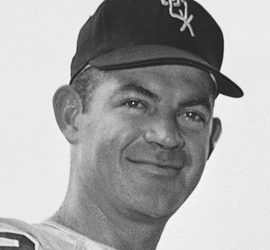Baseball is an ever-changing sport. Those who played around the turn of the century wouldn’t recognize the product that is on the field today. Today’s game is all about launch angles and homeruns. The revolution of launch angles relies heavily on a theory expressed by Justin Turner’s argument that “You can’t slug (hit homeruns) by hitting balls on the ground.” He’s right. Front offices agree, and launch angle is what teams are paying for these days.
The Basics
You can’t hit a ball over the fence if you don’t put it in the air. By hitting “up” on the ball, you increase the chances of it leaving the yard. The current science says that a homerun is most likely if the ball is hit at a 25-35 degree incline. Going above 35⁰, potentially, puts the ball too high. Hitting the ball below 25⁰ is considered a line drive and is less likely to leave the park.
Launch angles also require something called exit velocity which measures how hard a ball is hit. This generally favors big guys that you would expect to be power hitters anyway.
In 2018, Giancarlo Stanton hit the hardest ball in baseball – it was 121.7 mph. In fact, Stanton had 10 of the 12 hardest hit balls in the league. That is, likely, the reason that he hit 38 HR. The average exit velocity for a homerun is around 95 mph.
The Traditional Theory
Traditionally, the thought has been that player should hit “down” on the ball. That theory revolved around the fact that it forced the defense to work harder. By putting the ball on the ground, it forces fielders to react quickly, make a clean catch, a good throw, and the first baseman had to make a clean catch as well. It also allowed players with great speed a greater chance to get on base.
There are a few faults with this philosophy. First, you had to string together multiple hits to score a run. That is, if you assume there is no stolen base, a runner doesn’t score from first on a single very often. Some would argue that stringing together three singles isn’t very exciting. It’s also worth noting that this philosophy developed in the 1800’s when fielders didn’t wear gloves. Not having a glove made it significantly more difficult to make a play. Today, fielders tend to have the highest quality baseball gloves for more comfort and performance.
How The Theory Has Changed
Today, we can measure the exact differences in game-styles. We have players that are bigger and stronger than ever before. In 2018, some of the league leaders included the likes of Rhys Hoskins (22.4⁰), Joey Gallo (21.5⁰), and Matt Carpenter (20.4⁰). Obviously, these are all premier power-hitters. Adding those launch angles to average exit velocities that range from 88-93 mph is a perfect recipe for homeruns.
Proving that this is a philosophy and not a requirement are players at the opposite end of the spectrum. That is, guys like Jonathan Villar (2.7⁰), Dee Gordon (3.6⁰), and Delino Deshields (3.7⁰) who are all players that depend on their speed. There is still a place in baseball for guys who can consistently make contact but aren’t going to put the ball out of the park.
As a comparison, Hoskins, Gallo, and Carpenter combined for 120 HR in 2018 while Villar, Gordon and Deshields combined for only 20 HR. A key downfall in this philosophy is that most hitters are sacrificing batting average for power. Hoskins, Gallo and Carpenter combined for a .236 batting average while Villar, Gordon and DeShields combined for a .248 average despite DeShields struggling as a young player. That means that the speed guys managed a hit 12% more often.
On an individual level, Matt Carpenter further proves the power/batting average balance. Carpenter has hit at least 20 HR in each of the last 4 seasons. In those 4 seasons, he has a combined .260 batting average. In his first 3 seasons as a full time player, he never topped 12 HR but managed a .294 average. In today’s game, .260 is still a good average; especially for a power hitter, but he clearly sacrificed his batting average for the launch angle revolution.
Launch Angle Prevalence
The launch angle revolution is in full swing and there are players that will live and die with it. Josh Donaldson was once quoted as saying “Groundballs are outs. If you see me hit a groundball, even if it’s a hit, I can tell you: It was an accident.” It seems a bit extreme, but Donaldson went on to say, “there’s not as much grass. But you look in the outfield, there’s fewer players and more grass. So if you hit it in the air, even if it’s not that hard, you have a chance.”
When you analyze the thought process, it really does make sense. But the key that Donaldson is leaving out is that you have to have the power to hit the ball out of the park. Joey Gallo’s average exit velocity was 93.9 mph (2nd best in baseball) so the launch angle philosophy works for him. However, Dee Gordon had an average exit velocity of 80.6 mph (330th, 3rd worst in baseball). If he suddenly started using the launch angle, it would hurt him because that swing would simply lead to fly ball outs.
The increased launch angle may not work for everyone, but it’s certainly a league wide trend. In 2015, the average batted ball was hit at about 10.5⁰. Through the early part of 2018, the average launch angle was about 12.8⁰.
This revolution started with the Oakland A’s who led the league in fly ball rates in 2012 and 2013. They found batters that could take extra pitches in order to find a ball they might hit out of the park. It helped them win the division in back to back years. On an individual basis, we’ve seen guys like Marlon Byrd, David Murphy, and Justin Turner revitalize their careers with the new approach.
You can’t overgeneralize though. Josh Donaldson famously went on MLB Network and said, “If you’re 10 years old and your coach is telling you to get on top of the ball, tell him no.”
Video: https://www.youtube.com/watch?v=NyWNCrxVzPU
As mentioned before, that approach only works for some players. So, it’s important to know yourself as a hitter. There’s no value in switching your philosophy and becoming a fly-out hitter because you can’t quite get the ball over the fence.
Add The Sports Daily to your Google News Feed!








